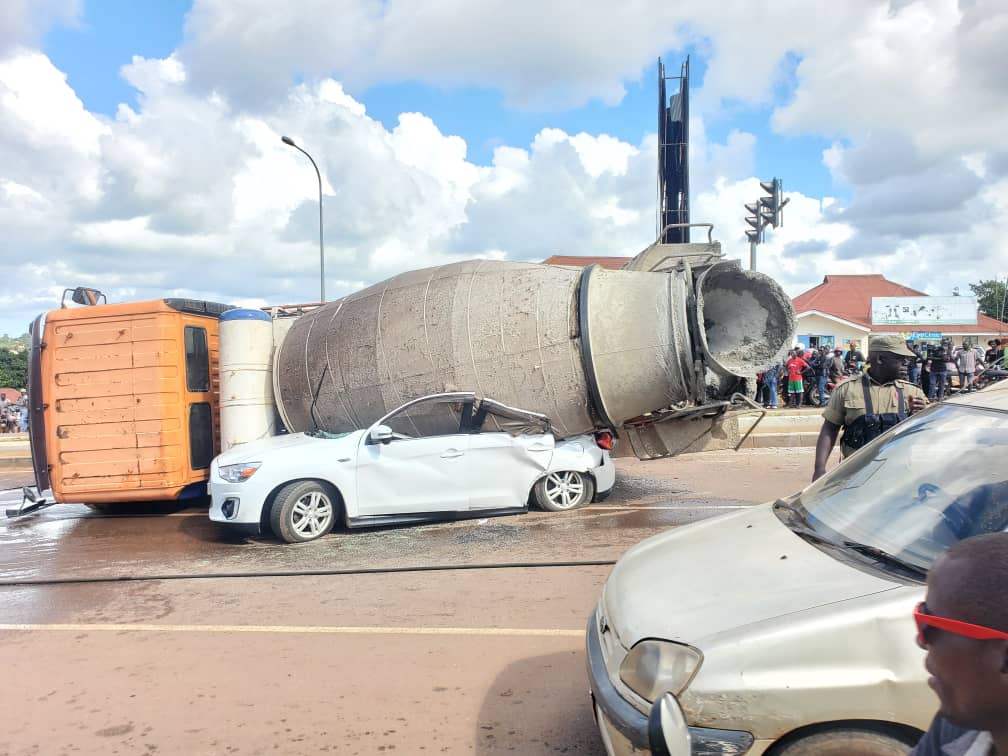Government is building Karuma and Isimba dams on taxpayers’ hard-earned money

AUTHOR: Simon kasyate. PHOTO/HANDOUT
What you need to know:
- Explanation of loans. When you take a loan to build a house, yes technically you are using money that does not belong to you, but as you honour your obligations and pay, ownership of the house remains yours and it is not wrong to say you built your house, not on a loan, but on your hard-earned money.
In the last week of last month, the Uganda Revenue Authority congregated most, if not all government ministries, departments and agencies to Kololo Ceremonial Grounds to showcase what they do. The three-day event was dubbed “Taxpayer appreciation week’.
It was in the form of an exhibition by the participants to show the public what they do, and for others, “to tell the public who they are”. The philosophy behind this event is that citizens pay taxes, so they deserve, as a basic courtesy from government, to be told or even better, shown what their taxes do.
And as you know, our eyes are in the hands – meaning beyond ‘seeing is believing’, some of us touching is double believing. The exhibition also served as a moment to appreciate the taxpayer, saying it as simply as “we are because you are.”
Entry was free and the public attended the event in large numbers.
Another driver for the large numbers was the prospect of getting a National ID card with no much hassle. And so for the three days, it was a bonanza; with almost everything for everyone from - those who came to seek information, those who came to critique government work as well as those who came to sell and buy merchandise of different forms, including a delicious and affordable meal and drinks.
Uganda Electricity Generation Company Limited UEGCL was one of the government agencies –in the electricity sector- that graced this year’s taxpayers appreciation week. This was the second time for UEGCL participation, the first being last year.
The exhibition merchandise of UEGCL was a centerpiece model of the Karuma Hydropower project; an architectural marvel and novel installation, which shall house the powerhouse and all the other fittings of a hydro power plant save for the dam, switchyard and intake, several meters underground.
Apart from perhaps the Uganda railway, built from Mombasa in 1896 and stopping in Arua in 1964, with branches to Kasese and soroti via Tororo, the Karuma project is the largest single infrastructure project undertaken by Uganda government since the country’s 56 years of independence. It will, upon completion also boast of the highest installed capacity (600MW) of all the hydro power stations in the country.
The largest installed capacity is held by Bujagali of 250MW; so Karuma shall be more than twice the ‘size’ of Bujagali. The numbers are staggeringly different; Karuma shall cost $1.7 billion (about Shs5 trillion) while the Uganda Railway will cost the equivalent of Shs24.7 billion – the economists will easily amortise this to today’s value.
When we talk underground power and other installations, we include tunnelling and ducts and their respective accesses. There is more than 30 kilometres of underground tunnelling in Karuma – longer than the full stretch of the Kampala Northern Bypass, which is 21 kilometres.
At any one time since commencement of works in 2013, the project has had a fluid work force of no less than 5,000 individuals, creating jobs and imparting skills while causing business and other opportunities for the hitherto little town of Karuma. The story of Karuma is one to last a night around a born-fire in typical traditional style of folklore telling.
But for the exhibition, aware of the attention span and the limitation of time, UEGCL placed a picture show both in and outside the exhibition tent and had a TV screen rolling soft copy illustrations and documentaries on this and other projects it is currently undertaking such as the 183MW Isimba Hydro Power project.
One question kept coming up from many people who visited and listened to the stories about Karuma and Isimba dams. “You mean these dams are being built using our taxes?” they asked. The response was written on the wall. “Government contributes 15 per cent and concession loan from China’s Exim Bank 85 per cent”.
“So, if we are getting loans to build these dams, those are not our taxes?” was another question.
I used the simple analogy to drive the yes answer home. When you take a loan to build a house, yes technically you are using money that does not belong to you, but as you honour your obligations and pay, ownership of the house remains yours and it is not wrong to say you built your house, not on a loan, but on your hard-earned money. I bounced this argument off to my economist friend Ramathan Ggoobi and he agreed with me.
So yes, government did acquire concession loans to ensure we have these strategic installations of national importance. So our role as the implementing agency for government, is to ensure that the people of Uganda get value for money by enforcing quality management in the building.
Besides, UEGCL is set for prudent operation and maintenance of these installations along sound business principles to ensure that government does not default on its loan obligations while at the same time the citizens, whose taxes are used to pay the loan, get reliable, high quality and affordable electricity to power their needs profitably.
So yes, Karuma and Isimba dams are being built using our taxes!
Mr Kasyate is the corporate affairs manager, Uganda Electricity Generation Company Limited (UEGCL).
[email protected]




